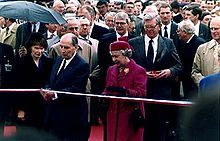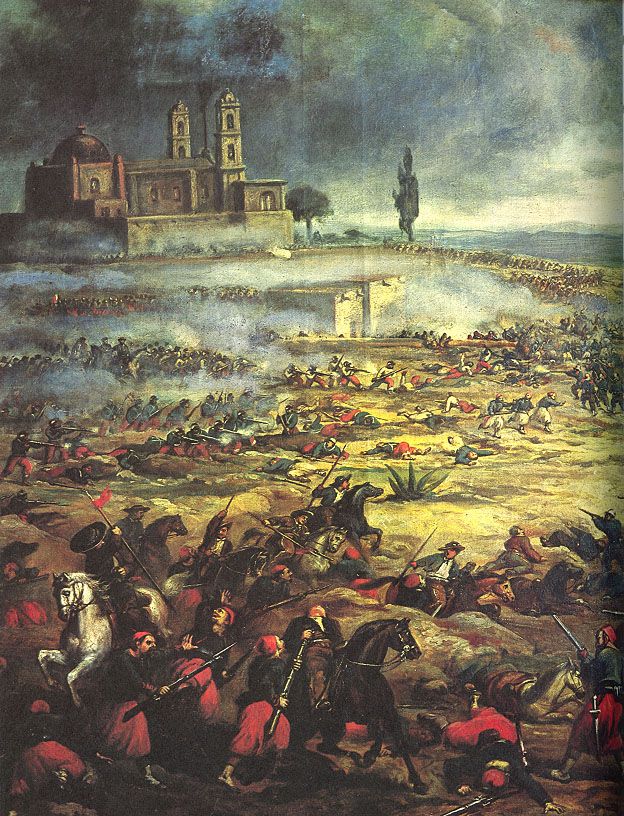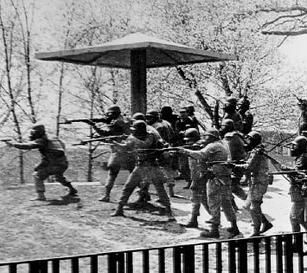This is your morning Open Thread. Pour your favorite beverage and review the past and comment on the future.
Find the past “On This Day in History” here.
Click on images to enlarge
May 13 is the 133rd day of the year (134th in leap years) in the Gregorian calendar. There are 232 days remaining until the end of the year.

On this day in 1846, the United States declared war on Mexico in a dispute over Texas. The U.S. Congress overwhelmingly votes in favor of President James K. Polk‘s request.
The Mexican-American War (or Mexican War) was an armed conflict between the United States and Mexico from 1846 to 1848 in the wake of the 1845 U.S. annexation of Texas, which Mexico considered part of its territory despite the 1836 Texas Revolution.
The Mexican government had long warned the United States that annexation would mean war. Because the Mexican congress had refused to recognize Texan independence, Mexico saw Texas as a rebellious territory that would be retaken. Britain and France, which recognized the independence of Texas, repeatedly tried to dissuade Mexico from declaring war. When Texas joined the U.S. as a state in 1845, the Mexican government broke diplomatic relations with the U.S.
The Texan claim to the Rio Grande boundary had been omitted from the annexation resolution to help secure passage after the annexation treaty failed in the Senate. President Polk claimed the Rio Grande boundary, and this provoked a dispute with Mexico. In June 1845, Polk sent General Zachary Taylor to Texas, and by October 3,500 Americans were on the Nueces River, prepared to defend Texas from a Mexican invasion. Polk wanted to protect the border and also coveted the continent clear to the Pacific Ocean. Polk had instructed the Pacific naval squadron to seize the California ports if Mexico declared war while staying on good terms with the inhabitants. At the same time he wrote to Thomas Larkin, the American consul in Monterey, disclaiming American ambitions but offering to support independence from Mexico or voluntary accession to the U.S., and warning that a British or French takeover would be opposed.
To end another war-scare (Fifty-Four Forty or Fight) with Britain over Oregon Country, Polk signed the Oregon Treaty dividing the territory, angering northern Democrats who felt he was prioritizing Southern expansion over Northern expansion.
In the winter of 1845-46, the federally commissioned explorer John C. Fremont and a group of armed men appeared in California. After telling the Mexican governor and Larkin he was merely buying supplies on the way to Oregon, he instead entered the populated area of California and visited Santa Cruz and the Salinas Valley, explaining he had been looking for a seaside home for his mother. The Mexican authorities became alarmed and ordered him to leave. Fremont responded by building a fort on Gavilan Peak and raising the American flag. Larkin sent word that his actions were counterproductive. Fremont left California in March but returned to California and assisted the Bear Flag Revolt in Sonoma, where many American immigrants stated that they were playing “the Texas game” and declared California’s independence from Mexico.
On November 10, 1845, Polk sent John Slidell, a secret representative, to Mexico City with an offer of $25 million ($632,500,000 today) for the Rio Grande border in Texas and Mexico’s provinces of Alta California and Santa Fe de Nuevo Mexico. U.S. expansionists wanted California to thwart British ambitions in the area and to gain a port on the Pacific Ocean. Polk authorized Slidell to forgive the $3 million ($76 million today) owed to U.S. citizens for damages caused by the Mexican War of Independence and pay another $25 to $30 million ($633 million to $759 million today) in exchange for the two territories.
Mexico was not inclined nor able to negotiate. In 1846 alone, the presidency changed hands four times, the war ministry six times, and the finance ministry sixteen times. However, Mexican public opinion and all political factions agreed that selling the territories to the United States would tarnish the national honor. Mexicans who opposed direct conflict with the United States, including President José Joaquin de Herrera, were viewed as traitors. Military opponents of de Herrera, supported by populist newspapers, considered Slidell’s presence in Mexico City an insult. When de Herrera considered receiving Slidell to settle the problem of Texas annexation peacefully, he was accused of treason and deposed. After a more nationalistic government under General Mariano Paredes y Arrillaga came to power, it publicly reaffirmed Mexico’s claim to Texas; Slidell, convinced that Mexico should be “chastised”, returned to the U.S.

 On this day in 1937,
On this day in 1937,  On this day in 1934,
On this day in 1934, 


 On this day in 1973,
On this day in 1973, 


 On this day in 1862,
On this day in 1862,  On this day in 1970,
On this day in 1970,
Recent Comments